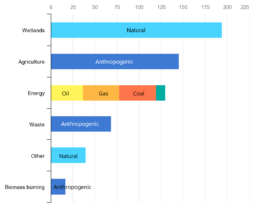The increasing use of fertilizers in agricultural farms has led to a loss in the nutrient value of soil. A huge fraction of global hazardous emissions results from soil and these are related to the use of chemical fertilizers in agriculture. With the adoption of biochar technology in agriculture, researchers and scientists have found that it can retain the nutrient value of soil more than any other organic matter which is commonly applied to do so. However, there are several challenges in employing Biochar in agriculture.
The studies and field experiments have shown challenges including the cost incurred, transportation and storage of crop residue, quantification of biochar structure and comparing it to different soil quality, optimizing the conditions of pyrolysis process, completely understanding the process by which biochar ameliorates Nitrogen content, and retains nutrient leaching in the soil. Some of these challenges in employing biochar in agriculture have been detailed below:

The mechanism to remove nitrous oxide is yet not fully defined
The present challenge in exploiting the complete use of biochar is to acknowledge the mechanism by which biochar eradicates nitrous oxide so that there can be a more optimized approach to achieve the target of reducing emissions while keeping in mind other constraints.
Decrease in herbicide and weed control efficacy
According to a study the herbicide and weed control efficacy decreases in the presence of biochar and it depended on the specific surface area of biochar. Higher SSA biochar hindered weed control and herbicide efficacy more as concluded from a laboratory test maintained with the agronomic environment. However, these results were observed with the freshly applied biochar, and it is suggested that after the application to soil, biochar may lose its sorption capacity for pesticides. Further research in this field demands ways of mitigating the effects of biochar on herbicide and weed control efficacy.
Researchers are looking into options such as the time difference between applying biochar and pesticide to the soil, the depth at which biochar can be applied in the soil thus reducing its contact with herbicides, etc.
Seasonal availability
Another main challenge in this field is the seasonal availability of biomass and pre-processing of biomass to be used for biochar production. Feedstock with high water content must be dried to maintain high pyrolysis efficiency while it is not feasible to transport dried feedstock due to the risk of combustion. Thus, it is necessary to maintain appropriate water content in the feedstock to abide by the safety regulations. Feedstock with high nitrogen content may be required to be pre-processed to lower the nitrogen content and make it agronomically useful.
Albedo affects are yet not fully defined
Out of many studies on the effect of biochar on soil, a few studies have addressed some long-term challenges lying in this field. For example, a research concluded decreased albedo resulting from biochar application in soil. Decrease in albedo results in increased soil temperature which further leads to nutrient losses and also affects water retaining capacity, ecosystem water reservoirs, species, seasonal length, etc. However, no other studies other than this have addressed this challenge, and this demands further exploration in this direction.
Quality management
The quality and characteristics of biochar obtained after pyrolysis depends on several factors like temperature range, rate of the process, etc. Biochar produced at a low rate and a low temperature has a relatively better sorption capacity than one produced at a high temperature and rate. Also, with the increase in temperature, the output of the process tends toward producing bio-oil and gases while lower temperature favors the production of biochar.
What is the way forward?
While there are several challenges in integrating biochar in agriculture, a lot of these still need future evaluation and experimentation. Several studies have highlighted the short- and long-term benefits of biochar, including the reduction of atmospheric CO2. When amended in soil with fertilizers, it improves the soil and crop quality, and crop yield as well as reduces the emission of toxic gases from soil to the atmosphere. Biochar has a substantial capacity to retain soil water, saturated hydraulic capacity, and nutrient value in the soil and thus mitigate the emission of any toxic matter from the soil into the atmosphere. As a result, biochar has been considered a negative emission agent for the atmosphere.

